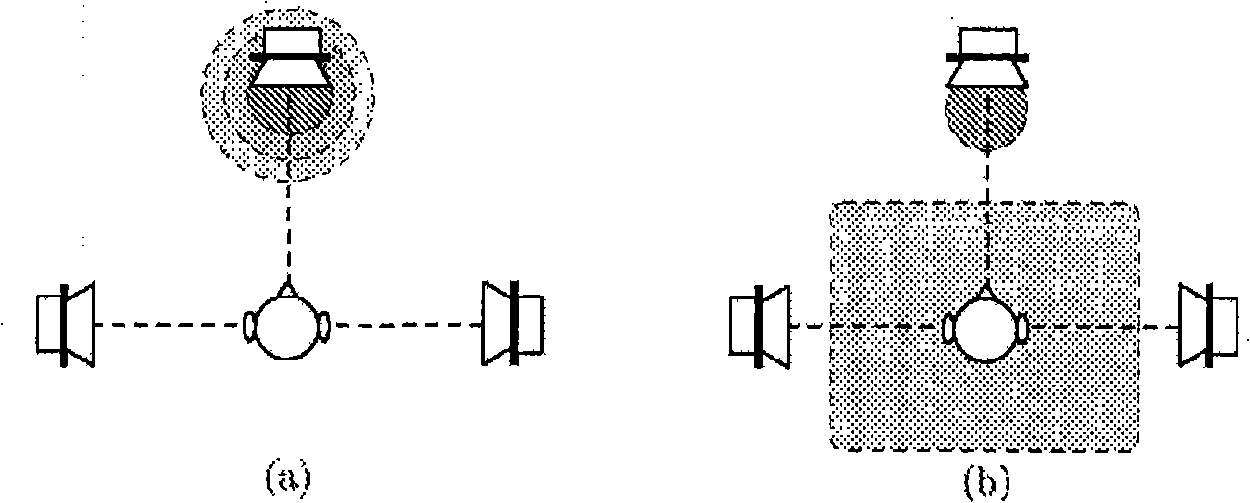Method to generate multi-channel audio signals from stereo signals
一种音频信号、多声道的技术,应用在立体声系统、准立体声系统、电气元件等方向,能够解决限制性能、改进不是清楚足够、没有明确地考虑其它的方面等问题
- Summary
- Abstract
- Description
- Claims
- Application Information
AI Technical Summary
Problems solved by technology
Method used
Image
Examples
Embodiment Construction
[0033] Spatial listening and stereo speaker playback
[0034] The proposed scheme inspires the description of the important case for two input channels (stereo audio input) and M audio output channels (M > 2). Later, it describes how the same reasoning as derived in the example of the stereo input signal applies to the more conventional L input channel case.
[0035] The most commonly used consumer playback systems for spatial audio are figure 1 Stereo speaker setup shown. Two loudspeakers are placed in front of the listener to the left and right. Typically, these loudspeakers are arranged on a circle at angles -30° and +30°. The perceived width of the auditory spatial image when listening to such a stereo playback system is approximately limited to the area between and behind the two speakers.
[0036] During natural listening and when listening to reproduced sound, the perceived auditory-spatial image depends primarily on binaural positional cues, namely, interaural time...
PUM
 Login to View More
Login to View More Abstract
Description
Claims
Application Information
 Login to View More
Login to View More - R&D
- Intellectual Property
- Life Sciences
- Materials
- Tech Scout
- Unparalleled Data Quality
- Higher Quality Content
- 60% Fewer Hallucinations
Browse by: Latest US Patents, China's latest patents, Technical Efficacy Thesaurus, Application Domain, Technology Topic, Popular Technical Reports.
© 2025 PatSnap. All rights reserved.Legal|Privacy policy|Modern Slavery Act Transparency Statement|Sitemap|About US| Contact US: help@patsnap.com



